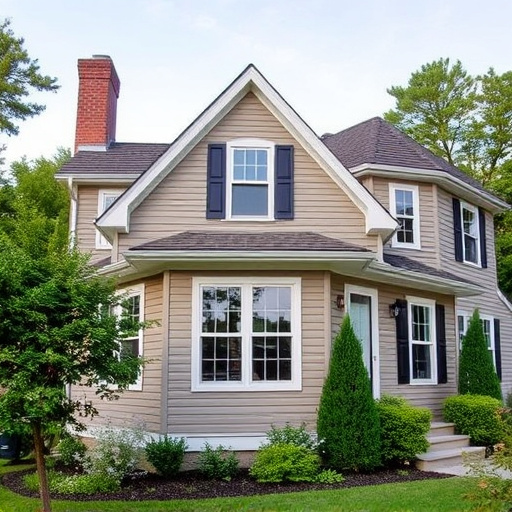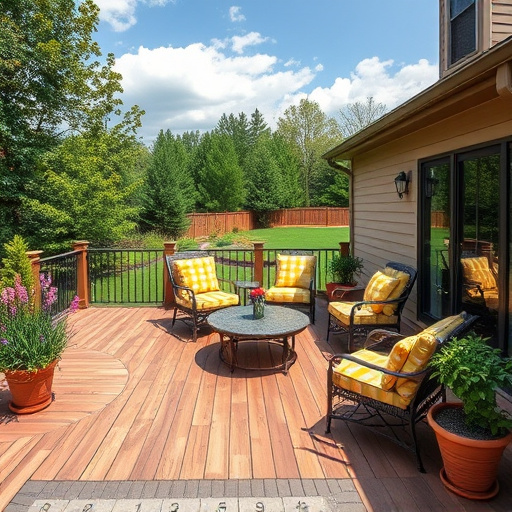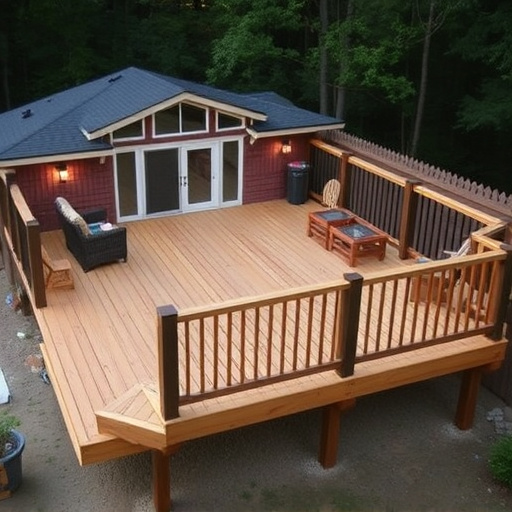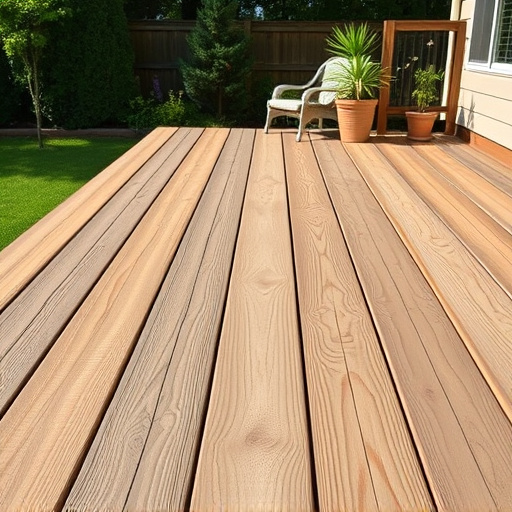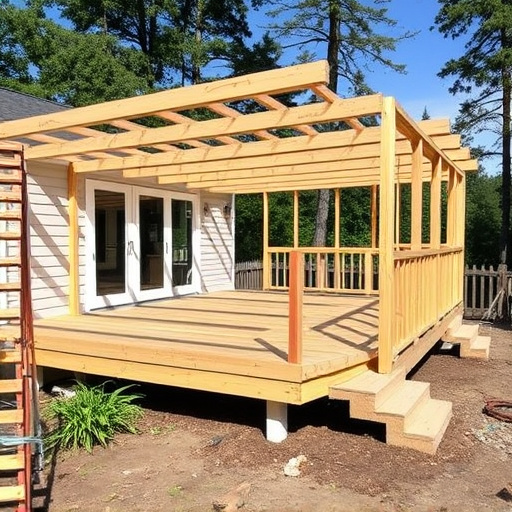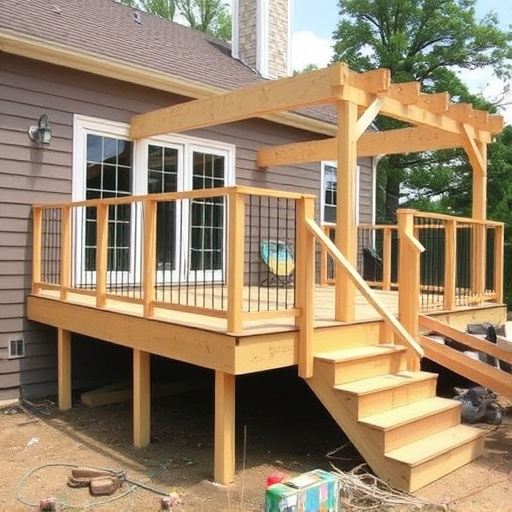Commercial decking transforms retail spaces into captivating destinations by offering versatile structures for product showcasing, events, and dining. Utilizing wood, metal, or composite boards, retailers create elevated platforms with creative layouts from minimalist to elaborate. Integrated siding and gutters ensure a seamless finish, while larger structures may require roof replacement services. In today's competitive environment, unique designs featuring vertical gardens, modular systems, digital signage, and accessible features enhance space utilization, customer engagement, and brand identity through dynamic, multi-purpose retail experiences.
Unleash the power of creative commercial decking layouts to transform retail environments! This article delves into the world of commercial decking, exploring its basics and myriad benefits. We then navigate contemporary design trends tailored for retail spaces, presenting a symphony of innovative ideas that captivate and engage. Additionally, discover practical tips for implementing these layouts effectively, ensuring your retail environment becomes a vibrant, bustling testament to modern design.
- Understanding Commercial Decking: Basics and Benefits
- Design Trends for Retail Spaces: Creative Ideas
- Implementing Layouts: Tips for Effective Retail Environments
Understanding Commercial Decking: Basics and Benefits

Commercial decking is a versatile design element that transforms retail spaces into engaging environments. It involves creating elevated platforms or structures within a store or outdoor setting to showcase products, enhance visual appeal, and provide a unique shopping experience. By understanding the basics of commercial decking, retailers can unlock its numerous benefits.
This concept goes beyond traditional flooring or display setups. It includes various materials such as wood, metal, or composite decking boards, offering durability and low maintenance. Commercial decking allows for creative layout designs, from minimalist platforms to elaborate structures with seating areas and integrated lighting. Moreover, it can accommodate different retail needs, including pop-up shops, product displays, event spaces, and even outdoor dining areas, thereby increasing flexibility and versatility in space utilisation. Incorporating siding and gutters alongside these decking installations ensures a seamless and aesthetically pleasing finish, while roof replacement services may be required for larger structures to maintain a safe and functional environment.
Design Trends for Retail Spaces: Creative Ideas

In today’s competitive retail landscape, creative commercial decking layouts are transforming ordinary spaces into captivating destinations. Design trends favor unique, visually appealing structures that double as functional areas for various activities, enhancing customer engagement and brand identity. Beyond traditional designs, retailers are exploring innovative concepts like elevated platforms, interactive displays, and seamless indoor-outdoor transitions. Incorporating elements from nature, such as vertical gardens or living walls, adds a touch of greenery that not only aestheticizes the environment but also contributes to better air quality and mental well-being.
These creative ideas extend beyond mere aesthetics; they offer practical solutions for multi-purpose spaces. For instance, modular decking systems allow for easy reconfiguration, accommodating different event formats or promotions. Integrating technology through digital signage and interactive screens further enhances the customer experience, enabling dynamic content delivery and real-time engagement. Moreover, focusing on accessibility and inclusivity ensures that these creative layouts cater to a diverse range of shoppers, from those using mobility aids to families with young children, making retail environments more welcoming and enjoyable for all.
Implementing Layouts: Tips for Effective Retail Environments

Implementing well-designed commercial decking layouts is a strategic move for retailers looking to enhance their space and engage customers. When planning, consider the flow of foot traffic; products should be displayed in a way that guides shoppers naturally through the store. For instance, creating designated areas for different product categories, using visual cues like lighting or signage, and optimizing the placement of displays can significantly impact customer experience and sales.
In retail environments, versatility is key. Modular decking systems offer flexibility to adapt layouts over time, aligning with evolving business needs. Incorporating features like adjustable shelving, moveable partitions, and easily replaceable flooring ensures that your space remains fresh and appealing. Additionally, integrating practical elements such as proper siding and gutters, and robust roofing solutions like efficient roof replacement services, contributes to a durable and visually pleasing commercial decking setup.
Creative commercial decking layouts transform retail environments into engaging spaces that enhance customer experiences. By understanding the basics and benefits of commercial decking, keeping up with design trends, and implementing effective layout strategies, retailers can leverage these innovative solutions to elevate their stores’ aesthetics and functionality. Integrating well-designed commercial decking not only attracts customers but also contributes to increased sales and brand loyalty.


